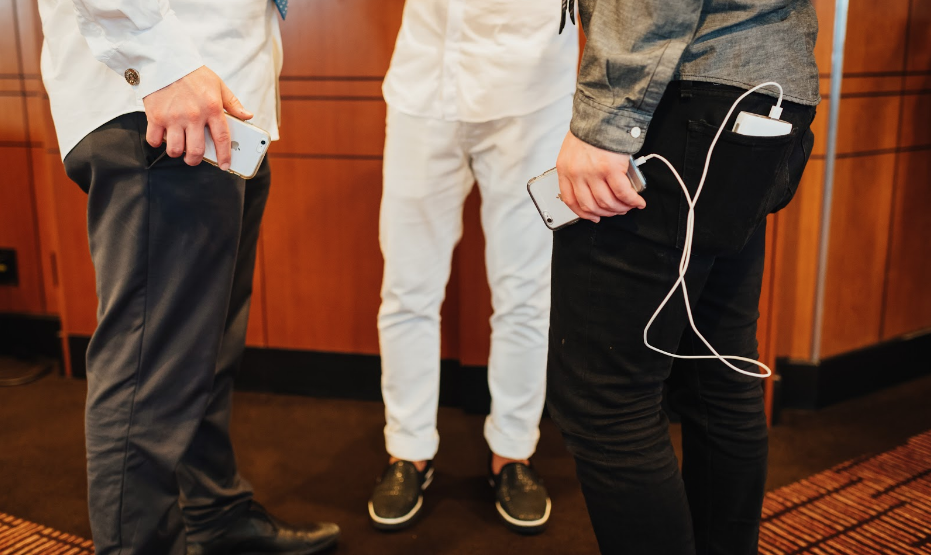
Smartphones are with us everywhere, and GPS technology has made it possible for third parties to know where we are at all times. While this poses a big opportunity for mobile marketers to target audiences in a whole new way, it can also be interpreted as majorly intrusive and lead to a whole host of other problems if done incorrectly. CJ Chaney, co-founder of proximity mobile marketing platform Smartwhere, walked us through his nine commandments for effective location-based marketing in our recent webinar. Here’s what you need to know.
Follow These Commandments to Maneuver Proximity Marketing
1. Thou Shalt Not Be Creepy
[bctt tweet=”Don’t use the technology in a way that it makes the customer raise their eyebrow.” username=”tune”]Don’t use the proximity technology in a way that it makes the customer raise their eyebrow, where the first thing they’re going to say is, “How did they know this about me?” You want to create value and you want to let people know what the value is ahead of time — not creep them out by popping mobile marketing messages too often.
2. Thou Shalt Provide Value
Don’t immediately prompt a user for location permissions out of the gate without telling them what it’s for. A much better way of handling a scenario like that is to pop an interstitial, which is a page that pops up before or after an expected content page. (On mobile, these are most often encountered on the way to the app store or when switching between app and mobile web.)
Within the interstitial, give users a really clear picture of what you’re doing with their information, why you want to know their mobile location, and more importantly, what’s going to be awesome about it once you do have this information. Then, if they want to opt in, allow them to enable marketing permissions; if not, then just pop them out of the interstitial.
3. Thou Shalt Do No Evil
[bctt tweet=”Don’t negatively affect a user’s device. So first and foremost, think about battery.” username=”tune”]Don’t negatively affect a user’s mobile device. So first and foremost, think about battery.
“We spend a lot of time doing [research and development] on really optimizing location services so it doesn’t impact a user’s battery,” CJ explained. “Same thing with data. Don’t chew up all of their data if you don’t have to.” Proximity marketing should always make mobile experiences better, not worse.
4. Thou Shalt Message at the Right Time and Right Place
Sometimes, the best way to engage with your customer based on the location information is after the fact. “Imagine a scenario where I walk into a store, and you know that I’ve been looking at a point of display for a new television for about 20 minutes. You don’t necessarily need to pop that ad right there at that moment,” CJ said. “It could be that you know I was there; you know I was looking at that television. Three days later, go ahead and send me a push notification or give me an interstitial that says, ‘Here’s that television, it’s 20 percent off now.’”
5. Thou Shalt Clean Up Messaging
If you do a local notification or a push notification based on users’ proximity or current location, if they leave that location and that message doesn’t have context anymore, make sure you clean it up. “There’s nothing worse than going to a location, getting some type of cool notification that you got 50 percent off, and then not seeing that notification until you’re 10 miles away from the store. Those are the types of scenarios that you want to avoid,” CJ said.
6. Thou Shalt Favor Dwells Over Enters
“Being able to see that somebody went into a specific store, that tells me a little bit,” CJ said. “But being able to tell that they spent an hour and a half in the store, ooh that tells me a lot more. And that really helps me target those customers in a much better way.” Mobile proximity marketing works best when mobile notifications are welcome, value via proximity is clear, and the marketing message isn’t too salesy.
Get The Rest of the Proximity Marketing Commandments
For the final three commandments, check out the on-demand recording, “Navigating Location-Based Mobile Marketing.” You’ll catch not only the final commandments right around the 12-minute mark, but examples of brands generating major revenue dollars through proximity mobile marketing, tools you can incorporate in your own mobile marketing campaigns, and ways to leverage across all the major industries.
Did you catch the webinar? Tell us what you thought in the comments below!
Like this article? Sign up for our blog digest emails.
Author
Becky is the Senior Content Marketing Manager at TUNE. Before TUNE, she led a variety of marketing and communications projects at San Francisco startups. Becky received her bachelor's degree in English from Wake Forest University. After living nearly a decade in San Francisco and Seattle, she has returned to her home of Charleston, SC, where you can find her enjoying the sun and salt water with her family.




Leave a Reply
You must be logged in to post a comment.